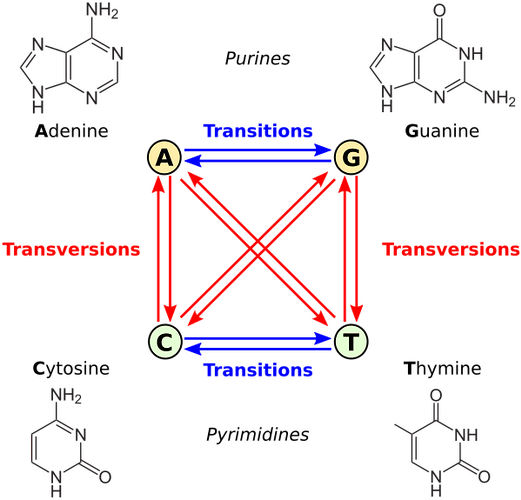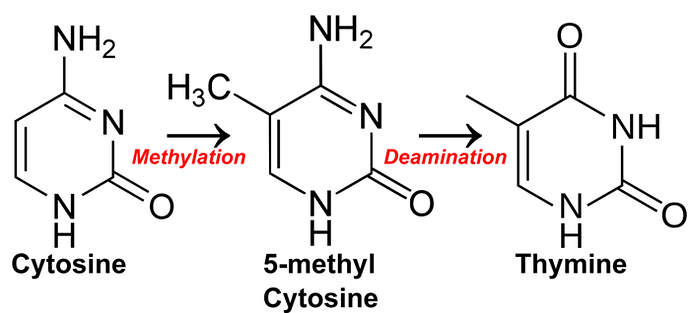We do know the mechanisms that cause mutations, and substitution mutations in particular.
First, the enzyme responsible for replicating DNA can incorporate the non-complementary base because the fit between the enzyme’s active site and nucleotides is loose. This process favors mutations of similar bases which are called transitions.
You will notice that two fo the bases have a single ring and two have two rings. These are the purines and pyrimidines. An adenine is more likely to be mutated to a guanine than to either a cytosine or thymine. This causes the excess of transition mutations.
The second major mechanism is deamination of methylated cytosines. DNA methylases will often attach a methyl group to a cytosine when it is just upstream of a guanine, a two base sequence called a CpG (cytosine-phosphate-guanine). If the methyl group is is removed by deamination then it becomes a thymine. This thymine is copied as the complementary adenine when the modified DNA is replicated.
While CpG’s are not as abundant as any given single base, CpG mutations still make up a disproportionate number of substitution mutations. In the case of the comparison of the human and chimp genomes, about a 3rd of all substitution mutations (if memory serves).
So yes, we understand the mechanisms.
It is observation and chemistry. There’s nothing subjective about it.
I am making no such assumption. We can observe the spectrum of mutations as they occur in real time. For humans, it looks like this.

As you can see, there is a large excess in transition mutations, as we would expect from known mechanisms. Now lets compare primate genomes and look at the differences between them.
We see that exact same pattern that we would expect from the known mechanisms that produce mutations. This is the evidence that leads to the supported conclusion that the differences between primate genomes, including humans, are due to the known and observed mechanisms that produce mutations.
Genomes are a direct record of a species evolution.
When the results are consistent with a natural process we don’t invent a supernatural process that exactly mimics the results of a natural process.




